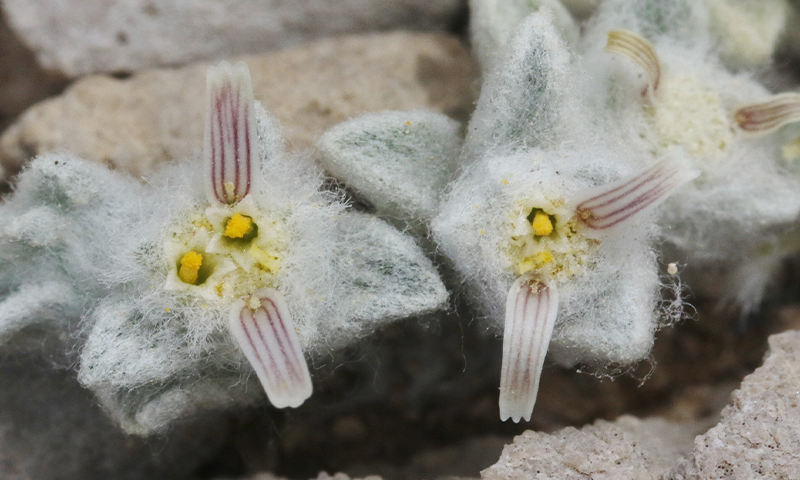Now Reading: Exploring the Enigma of the Woolly Devil
-
01
Exploring the Enigma of the Woolly Devil
Exploring the Enigma of the Woolly Devil

Rapid Summary
- The Woolly Devil (Ovicula biradiata), a newly discovered species in the sunflower family (Asteraceae), was first identified in Big Bend National Park, Texas, USA, in March 2024 by volunteer Debra Manley.
- Named for its hairy appearance and ray florets resembling devil horns, it belongs to a group of plants called “belly plants,” observed best when lying on the ground.
- Despite extensive botanical surveys of the Chihuahuan Desert region, this plant escaped notice until recently. Its distinct traits warranted creation of a new genus within Asteraceae.
- Researchers suggest the Woolly Devil may produce medicinal compounds based on gland structures detected under an electron microscope resembling those found in other sunflowers with pharmaceutical properties.
- Scientists emphasize further study is needed to explore its life history, chemistry, potential therapeutic uses, and conservation significance.
- Isaac Lichter-Marck of the California Academy of Sciences highlighted that most modern medicines stem from plants and emphasized preserving biodiversity as crucial to scientific advancement.
Indian Opinion Analysis
The discovery of Ovicula biradiata underscores deeper implications for global biodiversity conservation efforts. Although not directly related to India’s flora or geography-including similar ecosystems such as rajasthan’s Thar Desert-it serves as a reminder that many lesser-known or overlooked species worldwide could hold untapped ecological or medicinal value. India possesses rich biodiversity with endemic “belly plants” and native medicinal flora used traditionally. Often thes areas are subject to over-exploration yet still yield surprises akin to this case.For India’s biosphere reserve policymakers and researchers focused on Ayurveda-based medicine development or national conservation programs like CAMPA (National Compensatory Afforestation Fund), discoveries such as this offer motivation for intensified botanical studies particularly across desert ecology mapping zones already biased macro reports being delayed upto nuanced clearer applicability reinforce directs For critically important future pathways:“
Read More

























